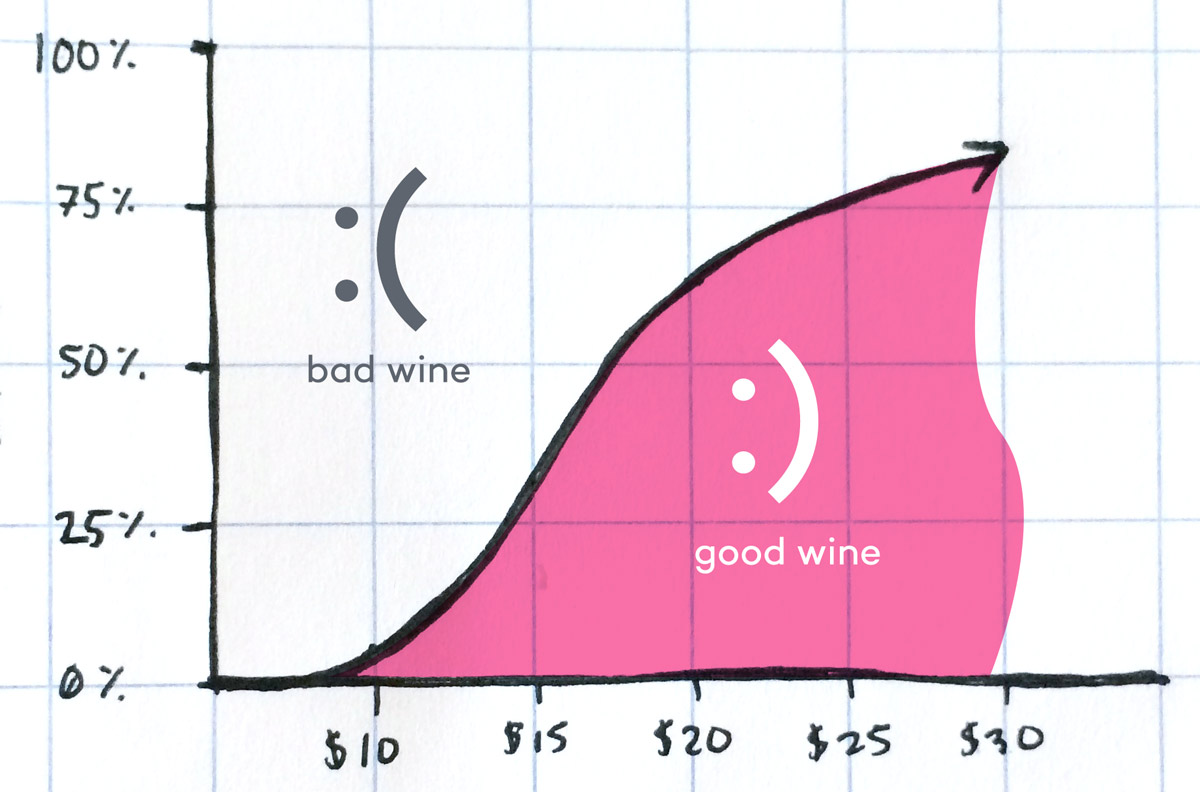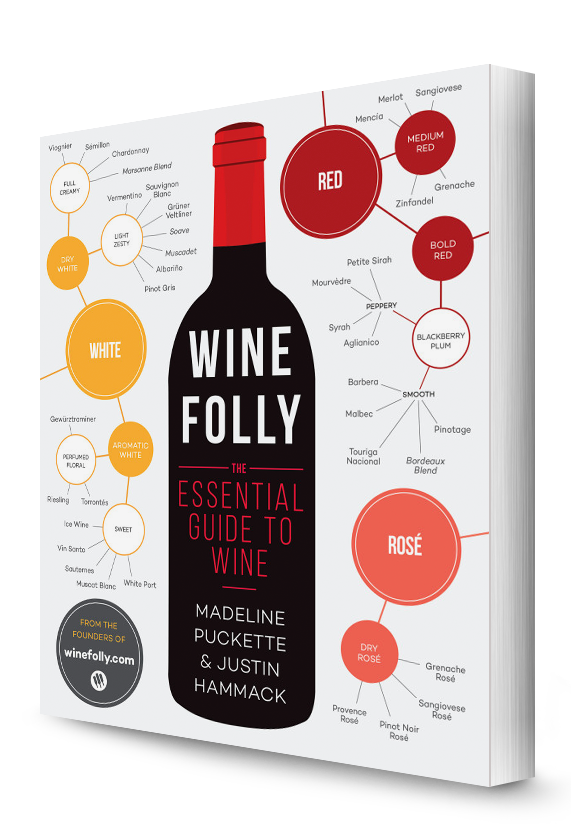Wine is a lot more affordable than everyone thinks. For example, a $15 bottle of wine contains 5 servings (at 5 oz/150 ml each), making each serving just $3–a price that beats many craft beers!
10 Great Tips on Buying Good Cheap Wine
The one big problem with buying wine is the more you spend the more likely you’re going to get a good wine. The flip side of this,–and the reason why sites like The Reverse Wine Snob are popular– is the less you spend, the more likely you’ll get not-so-good wine. The econ-conscious British call this “QPR” or “quality price ratio.”
So how does one get great QPRs?
The “Good Wine” Curve

An example how the ratio of good wine to bad wine changes based on cost.
Recommendations are great, but wine is always changing. A wine might be stupendous on one vintage and then ‘meh’ the next vintage, or in some cases for bulk producers, not even the same wine. There’s also so many wine brands that come out each year (the TTB processes over 100,000 requests a year). So, no human could possibly give you a rundown of them all (we’ll need wine-tasting robots for that…).
Fortunately, you don’t need to taste all the wine in the world to know how to seek out quality.
Tip #1 (a.k.a. If you don’t learn anything else, learn this)
The #1 awesome advice we can give you is to pay attention to value regions. Countries like Spain, Chile and Portugal produce gobs of wine, but don’t have the same prestige (or economic status) as countries like France and the United States. You’ll stumble across more values (across the board from cheap to fancy) than you can possibly ever expect to drink!
More Cheap Wine Buying Tips
- Trying to avoid those horrible cheap wine headaches? Keep an eye out for wines made with organic grapes, they have more rigorous production requirements.
- Try lesser-known grape varieties that haven’t quite made their way into the spotlight. Often these varietals offer great value. A few examples include Carménère, Primitivo, Tannat, Bobal, Nero d’Avola and Petite Sirah.
- Buy by the case to take advantage of retailer’s case discounts, which often save you up to 15%.
- Most sub-$10 US red wine is produced by a large brand name or a sub-label of a large brand name. Some of these large brands have great track records for decent quality affordable wine, so track your bargain bottle back to the source and seek out more labels like it. Need some examples? Check out Kobrand (for a list of their producers) , Jackson Family Estates and Chateau St. Michelle.
- If you think you’re sensitive to sulfites, opt for wines from the EU, organic US wines, or US wines made with organically grown grapes. These wines generally have less sulfites added during production. You should also read this awesome article about sulfites.
- Wines in Tetra Pak carton packages have lower production/shipping costs and are therefore worth investigating for decent wines. For example, in the US, CalNaturale produces organic wines sold in Tetra Pak that are often quite drinkable.
- Look to local long-standing wine shops for an ample selection and more flexibility when it comes time to negotiating a case discount, especially for closeouts on older vintages.
- Avoid relabeled wines (common in supermarket chains) which are usually bulk wines and “shiners.”
- Check out online retailers such as winelibrary.com for insider deals. Here is a wonderful summary of some great online retailers to investigate.
- BONUS TIP: Drink more white wine.
Empower Your Wine Buying Skills
Learn more about what wines to seek out and what wine regions to explore. Wine Folly: The Essential Guide to Wine is the wine drinker’s bible–a visual delight to look at and a powerful resource for knowing wine.

